Is Evernote The Best Note Taking App
Best note-taking apps of 2021

The best note-taking apps make it easy to take notes on the go, whether for inspiration, ideas, business insights, or even reminders.
Note-taking apps have become increasingly common, not least with the wide availability of mobile devices, not least smartphones. This means mobile apps for taking notes now allow you to write wherever you are, and there are a large range of apps available.
It doesn't matter if you're an engineer on a call, a secretary taking minutes, or simply inspired by an idea while commuting - the ability to take notes on a mobile device can be a real benefit.
However, while there are basic software apps for taking notes, sometimes bundled for free with mobile devices, these can be quite limited to simply allowing typed-in text to be used. These days much more feature-packed note-taking apps are now available.
These more advanced apps can work in multiple forms, from trying to replicate the word processing experience, to imitating blank notepads in digital form and so allow for handwriting and sketching.
Additionally, some note apps also include the ability to add images, audio, even video, to your notes, and even share these directly with colleagues and working teams.
Here we'll look at the best in note-taking apps currently available.
Best note-taking apps: How did we choose?
There are now a plethora of note-taking tools available to users - whether they need to keep track of important work tasks or simply need to jot down their shopping list. With smartphones now ubiquitous, individuals expect to have access to a note-taking app that is suitable for their needs. With that in mind, we've assessed several apps for ease of use, features, aesthetics, and a number of other factors. What works for one type of user may not necessarily be suitable for another, but this review will let you know the best note-taking app whether you need something simple or the latest features.
1. Microsoft 365 - Best all-rounder
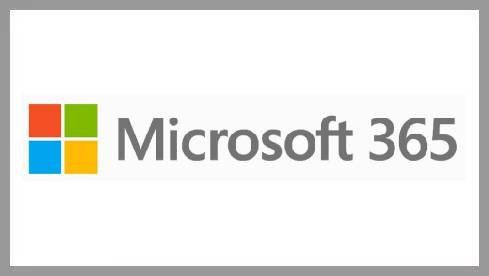
1. Microsoft 365
The best note taking and mobile office platform
Reasons to buy
+Full suite of apps +Cloud-based for accessibility +Mobile friendly +Sync to PC +Collaboration
Microsoft Office has come a long way, from being a chunky software platform for your PC, to the new Microsoft 365 cloud-based app which is sleek and accessible for Android and iOS mobile devices.
While most people might think of Microsoft OneNote or Sticky Notes as the basic note-taking app, why settle for a basic app when you can have the full power of the entire Microsoft Office suite on your phone or tablet?
That means having access to Word for starters, which is easily the most important document software available, and much more flexible and manageable as a format when it comes to note-taking than more basic apps. For a start, you won't need to worry about importing your notes into Word - which is what most people are going to need to do - and there are also the advantages of being able to sync documents with your PC as well as work collaboratively with colleagues.
Perhaps more importantly, it means you can write and edit and send essential documents on the go rather than having to type up notes to later re-use or mine, saving so much time. And that's before we even mention Excel for spreadsheets, Powerpoint for presentations, or Microsoft Teams for video conferencing which is now built into the platform as standard.
Overall, Microsoft 365 is far more than just a note-taking app, which is why we've ranked it as the best.
2. Evernote - Best app dedicated to note-taking
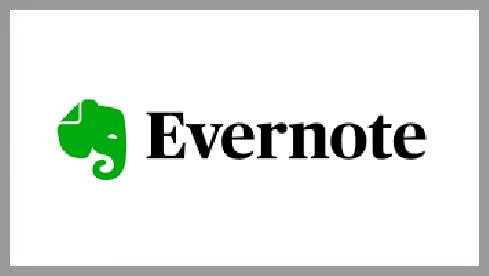
2. Evernote
The best dedicated note-taking app
Reasons to buy
+Free to use +Good functionality +Save web pages for offline use
Reasons to avoid
-Doesn't integrate with Microsoft Office
No list of best note-taking apps is complete without Evernote, which is one of the oldest and most fully-featured. Evernote lets you create both simple and complex workflows using a combination of notebooks, notes and tags to keep everything organized.
One of its best features for gathering research is the Web Clipper extension (supported in Chrome, Firefox and Safari), which lets you save entire webpages - including text, images and PDFs - with a single click. Notes can be accessed on laptops, mobile devices and the web, so you're rarely left with a situation where you can't retrieve what you've saved. Other features include the ability to set reminders, present notes PowerPoint-style, and merge them together.
Recent additions include new tables and a Siri integration for those using the iOS edition.
While there's a free plan with some limited features, there are also two paid plans, the Evernote Premium plan for individual users, and the Evernote Business plan for business.
The Evernote Premium plan allows for integrations with Slack, Outlook, Google Drive, Microsoft Teams, and Salesforce, as well as provides an AI for content suggestions such as similar content in other notes you've made, as well as content info from media sites.
The Evernote Business plan includes the above but also comes with collaborative options and team administrative features.
3. Ulysses - Best for iOS users
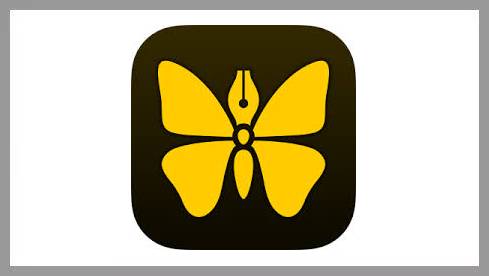
3. Ulysses
The best iOS note-taking app
Reasons to buy
+Good document managements +Sync between devices
Reasons to avoid
-iOS only -Not free
Ulysses has been around for a while now, and it's one of the most polished note-taking apps on Apple's computing platform. (One that's perfectly equipped for long-form writing, too.) Notes are written and stored in the app's proprietary Markdown style, which allows for inventive (and colorful) use of headings.
Added to that, images can be embedded in the form of links within documents; rather than displaying them in the body text, you can double click the links to preview image thumbnails. Ulysses also positions images in a sidebar that can also display a word count, mini notes and other information at a glance.
Ulysses uses iCloud to save and sync your documents, and these can be exported to a number of other formats, including PDF. Word .doc, ebooks, and HTML. All these extra features come a price tag, with monthly or annual subscriptions available.
4. Simplenote - Best user interface
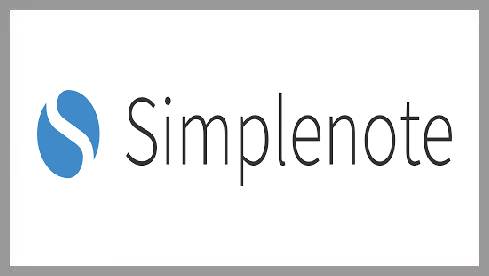
4. Simplenote
The simplest way to keep notes
Reasons to buy
+Free to use +Cross-platform +Sync and backup across devices
Reasons to avoid
-Text only
Simplenote's selling point is its clear, simple user interface, making it easy to keep track of notes. It is available for iOS, Android, Mac, Windows and Linux, with data synced automatically. There's also a web app if a client can't be downloaded.
Tagging and search tools ensure users can find what they're looking for and notes can be shared or published to others working in the same team or on a project. Simplenote backs up previous versions of documents so it's always possible to revert to an earlier one.
Simplenote doesn't have many advanced features, but is an ideal candidate for simple note taking. And best, of all, it's free.
5. Bear - Best looking note-taking app
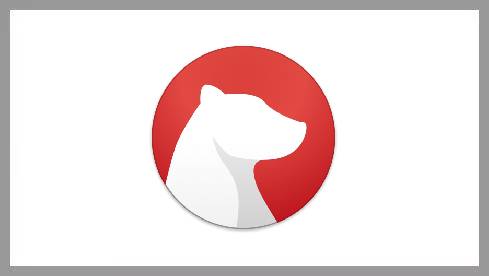
5. Bear
Elegant writing and note taking
Reasons to buy
+Advanced Markup Editor +Cross-link notes +Free, with cheap pro-version available
Reasons to avoid
-iOS only
A relative newcomer to the note-taking app scene, Bear lies somewhere in-between Evernote and Ulysses, allowing you to create notes and sync them across various Apple devices using iCloud.
Using a Slack-like three-pane interface, you can arrange notes by applying hashtags, which allows a subfolder style system. Bear uses rich Markdown for editing, so you can insert links into documents without having to display the full URLs in a similar manner to Ulysses. However, Bear, which is pretty easy on the eye, and one of the few polished Markdown apps that allow you to insert images directly into notes, which could make it a far more valuable app overall if images are a big part of your workflow.
Latest features include Tag autocomplete, light and dark themes, annotation of PDFs, encryption and app lock.
Most of Bear's features are free to use on any iOS device, but there is a paid-for pro-version with additional themes, export options, which are available with a small monthly or annual subscription.
6. Dropbox Paper - Best for collaboration

6. Dropbox Paper
A collaborative workspace
Reasons to buy
+Free to use +Collaborative working +Integrations available
Dropbox Paper launched in August 2016 and works across the cloud platform's mobile suite for Windows, iOS, and Android. What separates Paper apart is its focus on collaboration, allowing teams to share their ideas, images and videos for projects.
There are integrations with productivity apps such as Google Calendar and Slack as well as some more surprising tools like Spotify.
Recent additions include new organization tools such as the ability to create mobile folders on the go as well as improved delete and archive features. Dropbox also redesigned the Paper homepage which brings users Paper docs and Dropbox files together.
Its enterprise features make it an ideal note taking app for businesses, but it goes without saying that you get the most out of it if you are already a Dropbox customer.
7. Google Keep - Best for simplicity
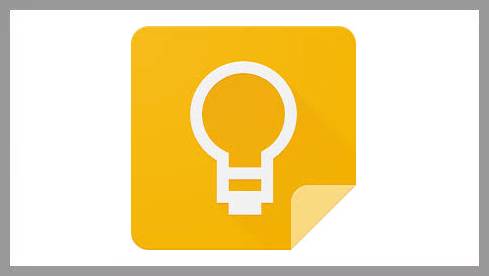
7. Google Keep
Google's secret little pad
Reasons to buy
+Simple to use +Free
Reasons to avoid
-Standalone only
Google Keep is the simplest note-taking app on our list, both visually and how it operates. Think of Keep as your place for storing digital post-it notes, with each note dotted around the interface as if they were laid on a table in front of you.
Notes can be given labels, pinned to the top, given a color, paired with reminders and collaborated on in real time. Additionally it also offers speech-to-text functionality so you can dictate notes on the go rather than have to write. There's also the ability to set up check boxes for lists to work through.
Overall, though, Google Keep is more minimal than other writing apps, which either works for or against it depending on your viewpoint. If you want to break away from your operating system's notes app, but don't want all of the features that come with other apps on our list, Google Keep is an, ahem, keeper.
8. Atom - Best for cross-platform users

8. Atom
A text editor with possibilities
Reasons to buy
+Cross platform +Edit multiple files at once +Collaborative editing
Reasons to avoid
-Not a rich-text editor
Something of a left-field choice, Atom is primarily an app used for coding, but its sheer range of customization options means that you can mould it into a useful text editor too. Because it's based on common web standards, you can hack its CSS stylesheet to create just about any visual theme you can think of. Want to make it look and feel like Word 2016 with a Smooth Typing Animation-style effect? No problem.
Want to write in Markdown with a solarized color scheme? Then download the Markdown Writer extension and choose from one of the hundreds of community-generated themes.
Atom is far from perfect as a text editor due to its lack of one or two standard features - such as an automatic grammar changer - that have been standard in other note-taking apps for years. But it's certainly one of the most interesting and capable when in the right hands.
A special note about Atom is that it's a cross platform editor, which means it's compatible with Windows, iOS, and even Linux. Collaborative editing means multiple people can edit the same files using different operating systems.
Other note-taking apps to consider
The increased use of mobile apps has seen an explosion in the number of note taking and text editing applications released. Here are a few more that it might be worth keeping an eye out for:
Zoho Notebook is a note-taking mobile app with a good stack of features. Users are encouraged to create separate notebooks within the app, each with a custom image. There's good support for images and rich text, and it's able to sync and backup across multiple devices.
ColorNote Notepad Notes is an app for Android devices, including the Amazon Fire tablet. It's only a simple program that is similar to Sticky Notes, but ColorNote Notepad Notes gets a mention precisely because it's one of the few note-taking apps that have been successfully ported to the Amazon app store.
Milanote isn't so much of a text-application as much as a pinboard for visual thinkers. It allows a mix of images, blocks of text, and lists, to be put together, and there are also draws to the side for holding page elements you haven't used but plan to do so later. Although not a mobile app, it is a web app optimized for mobile devices, which provides cross-platform functionality.
Squid Notes is an app for Android that supports handwriting and sketching, which can be especially useful for working with text and images more quickly and easily. There are different types of "paper" backgrounds available. You can also use digital signatures to add to your files and export them in other formats, such as PDF.
Quip is less of a note-taking app as much as a collaborative word-processing and spreadsheet applications. It's pitched especially toward business use, not least for different teams to work together, whether in sales, HR, IT, or project management, and is priced per team or user.

Brian has over 30 years publishing experience as a writer and editor across a range of computing and technology titles, and has been interviewed multiple times for BBC News and BBC Radio. His specialty on Techradar is Software as a Service (SaaS) applications, covering everything from office suites to IT service tools. He is also a science fiction and fantasy author, writing as Brian G Turner.
Is Evernote The Best Note Taking App
Source: https://www.techradar.com/best/best-note-taking-app
Posted by: bondsolish.blogspot.com

0 Response to "Is Evernote The Best Note Taking App"
Post a Comment